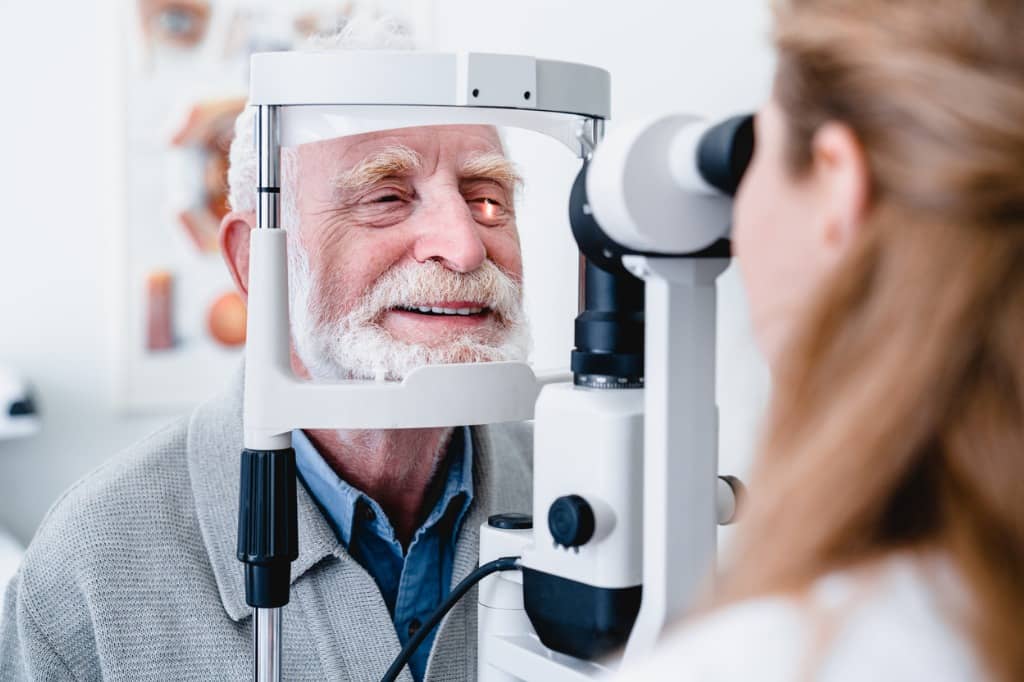Everything You Should Expect from Mohs Surgery

Written by: June Kim, MD
Skin cancer is the most common type of cancer in the United States, affecting millions of Americans every year. It’s also one of the most treatable cancers when caught early. One of the most effective ways to treat skin cancer is with Mohs surgery, a specialized type of surgery offering a 99% cure rate for skin cancer that has not yet been treated and a 94% cure rate for recurring skin cancer.
What is Mohs Surgery?
Mohs surgery is a micrographic procedure used to treat skin cancer by removing tumors while preserving as much healthy tissue as possible. Named after Frederick Mohs, this tissue-sparing surgical technique was first developed in the 1930s by Dr. Mohs. Over the last century, the method has been modified to offer:
- Improved patient comfort
- Faster processing time
- Increased tissue conservation
Who is a Candidate for Mohs Surgery?
Mohs surgery is optimal for skin cancers that:
- Have a high risk of recurrence
- Are located in functional or aesthetic areas where tissue conservation is essential
- Have unclear borders
This procedure can successfully treat a variety of skin cancers, including:
- Basal cell carcinoma
- Squamous cell carcinoma
What to Expect Before Mohs Surgery
If you are planning to undergo Mohs surgery at Cascade Eye & Skin Centers, there are a few ways to prepare. Before your procedure, your provider may ask you to stop smoking and avoid over-the-counter pain medications, such as ibuprofen and naproxen. In the 24 hours leading up to your procedure, you should also avoid alcohol to prevent elevated blood pressure and a higher risk of bleeding.
On the day of your surgery, your provider may recommend the following:
- Don’t wear makeup or jewelry
- Shower before your appointment
- Wear comfortable and loose-fitting clothing
- Bring snacks and ways to pass the time, such as a charged phone, newspaper, or book
- Take any prescribed medications
- Eat breakfast
What to Expect During Surgery
Mohs surgery is performed all in one visit on an outpatient basis, meaning you can go home on the day of your procedure. You will stay awake the entire time, and the surgery is completed through the following stages:
Step 1: Examination and Anesthesia
At the beginning of your procedure, your surgeon will examine the location of your skin cancer and may position you so that they can best access the cancerous tissue. Next, your surgeon will administer a local anesthesia injection, which is typically the most uncomfortable part of the procedure.
Step 2: Tissue Removal
Once the area is numb, you may feel minor pressure as your surgeon removes a thin layer of the diseased tissue and then places a bandage over the affected area. This step usually only takes a few minutes.
Step 3: Tissue Analysis
After the cancerous tissue is removed, your surgeon will examine the sample under a microscope, and all the cancerous portions are removed. The tissue processing often takes a considerable amount of time.
Based on the results of the microscopic examination, your surgeon will let you know if you need to have another layer of tissue taken out. If you need another layer removal, steps 1-3 will be repeated until no additional cancer cells are found.
Step 4: Repair
After the skin cancer has been removed, the Mohs surgeon will determine the best way to reconstruct the wound created by the surgery. If needed, the repair may be performed by another surgical subspecialist who may have particular expertise.
Although there are exceptions, most tumors require 1-3 stages for complete removal. These careful steps help to minimize the loss of healthy skin.
What to Expect After Mohs Surgery
After Mohs surgery, your surgeon will provide instructions on how to care for your surgical site. You may be required to keep the area covered with a bandage for a few days or weeks, and you will be given instruction on how to care for your stitches, if applicable, and when to expect them to heal.
Many patients experience minimal discomfort after Mohs surgery and can resume their normal activities within a week. However, you should avoid strenuous exercise and activities until your surgical site has healed properly. You can also expect to experience some localized swelling and bruising at the surgical site, but they often resolve relatively quickly.
To alleviate any uncomfortable symptoms, your provider at Cascade Eye & Skin Centers may recommend:
- A cold compress
- Over-the-counter pain medications
- Rest
Treat Skin Cancer with Mohs Surgery at Cascade Eye & Skin Centers
At Cascade Eye & Skin Centers, we have two fellowship-trained, board-certified Mohs micrographic skin cancer surgery specialists: Dr. Maureen Mooney and Dr. June Kim. Highly esteemed for their exemplary skills, outstanding cosmetic results, and excellent success rates, our surgeons operate out of our University Place location in our recently renovated Mohs surgical suite.
If you or a loved one has recently been diagnosed with skin cancer and would like to explore your treatment options, contact Cascade Eye & Skin Centers today. Our surgeons can review your best treatment options and discuss any risks or potential complications of Mohs surgery to ensure you have a successful outcome. Call (253) 671-7210 now to get started.




